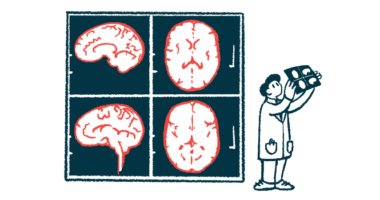Benefits of exercise in Parkinson’s rat study linked to neuroplasticity
Intensive treadmill exercise improved motor, cognitive function

Intensive treadmill exercise improved motor and cognitive function in a rat model of Parkinson’s disease and was linked to its ability to restore a cellular process called neuroplasticity in a recent study.
Neuroplasticity refers to the brain’s ability to adapt and re-wire in response to new experiences.
“We have discovered a never observed mechanism, through which exercise performed in the early stages of the disease induces beneficial effects on movement control that may last over time even after training is suspended,” said Paolo Calabresi, professor of neurology at Catholic University, director of UOC Neurology at the University Polyclinic A. Gemelli IRCCS, and the study’s corresponding author, in a press release.
The study, “Intensive exercise ameliorates motor and cognitive symptoms in experimental Parkinson’s disease restoring striatal synaptic plasticity,” was published in Science Advances.
Many clinical and preclinical studies have described the potential motor and cognitive benefits of exercise in Parkinson’s disease, and imaging studies suggest it boosts the release of dopamine, the brain signaling chemical lacking in patients.
The mechanisms that underlie those benefits are still being worked out in preclinical studies. It’s been proposed that exercise might promote neuroplasticity, a process important for learning and memory, but also for helping the brain adapt to disease or injury.
Neuroprotective effects of exercise
In this study, researchers explored the mechanisms by which exercise is neuroprotective using a rat model of early-stage Parkinson’s.
Healthy and Parkinson’s rats underwent either an intensive treadmill exercise program (active groups) or were placed on a treadmill that wasn’t turned on (sedentary group), five days a week for about a month.
As expected, rats with Parkinson’s exhibited motor and cognitive deficits relative to healthy animals. The exercise program led to improvements in the active rats relative to the sedentary disease group, however.
Moreover, the accumulation of alpha-synuclein in the Parkinson’s rats was reduced with exercise and the loss of dopamine-producing nerve cells (neurons) was prevented. Alpha-synuclein is a protein that accumulates to toxic levels in the brains of Parkinson’s patients, which is thought to contribute to dopamine nerve cell loss.
In Parkinson’s models, not only are dopaminergic neurons lost, but surviving ones show impairments in long-term potentiation (LTP), a cellular process that underlies neuroplasticity. Exercise in the rat model helped rescue LTP in the surviving cells in the striatum, a brain region known to be affected in Parkinson’s.
The beneficial effects of exercise on neuroplasticity were sustained for at least a week after the program ended, indicating its effects may be long-lasting.
Increases in brain-derived neurotrophic factor (BDNF) were observed after treadmill training in both Parkinson’s and healthy rats. BDNF is a protein involved in nerve cell survival, growth, and plasticity. It’s been associated with the benefits of exercise in Parkinson’s.
Blocking TrkB, a molecule BDNF interacts with, reversed the benefits of exercise on LTP.
The researchers also found that certain forms of another protein, called the N-methyl-D-aspartate (NMDA) receptor, were essential for this form of exercise-induced plasticity to occur. NMDA receptors mediate the activity of a brain signaling chemical called glutamate, which is important for various types of neuroplasticity. They are critical for forming structures called dendritic spines, nerve cell protrusions that help neighboring cells communicate with one another. These spines are very plastic and are constantly changing in response to new inputs.
Parkinson’s rats had a reduction in these spines, but exercise induced their full recovery.
Together, the data indicate that “adaptive changes in the striatum can enroll multiple players to build functional long-lasting changes and structural modifications that reshape striatal connectivity,” the researchers wrote, noting that, while previous studies have hypothesized that neuroplasticity might underlie the benefits of exercise in Parkinson’s, this study is the first to “demonstrate that assumption.”
“This study has a robust translational implication because it identified mechanisms underlying the therapeutic effects of exercise observed in clinical trials on patients with early [Parkinson’s] subjected to an ‘assisted’ treadmill training,” they said, adding the research opens new avenues for both clinical and preclinical work. Preclinical studies should investigate how targeting BDNF/TrkB and related molecules might be therapeutic in Parkinson’s.
The researchers are conducting a clinical trial to identify new biomarkers for monitoring the effects of exercise on slowing disease progression in early-stage Parkinson’s, Calabresi said.
“This will allow us to identify molecular and cellular mechanisms underlying the observed beneficial effects,” he said.







